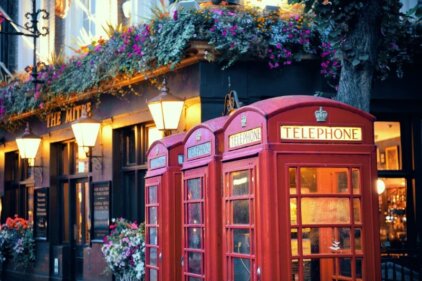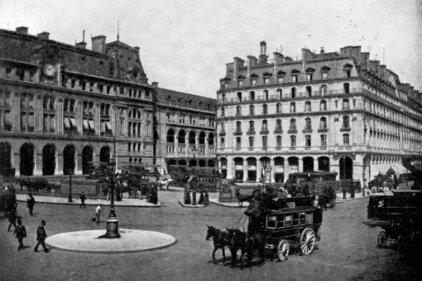The history of London is rich with remarkable events and stories that have shaped its identity. One of the most significant episodes in the city’s past is the Great Fire of London. This devastating inferno, which engulfed the city in 1666, has left an indelible mark on the cultural landscape of London. The Great Fire not only destroyed a significant portion of the city but also acted as a catalyst for transformation and rebirth. In this article, we will delve into the historical context of the Great Fire, explore the city’s architecture and layout before the fire, examine its impact on public opinion, and discuss the social, economic, and cultural changes that occurred in the aftermath. By uncovering the remnants and exploring the fire’s influence on art, literature, and architecture, we will gain a deeper understanding of the enduring significance of the Great Fire of London.
What is The Great Fire of London?
The Great Fire of London was a catastrophic event that unfolded from September 2nd to September 6th, 1666. It started in the bakery of Thomas Farriner on Pudding Lane and quickly spread, engulfing the city in flames. The fire raged for four long days, consuming over 13,000 houses, 87 churches, and numerous iconic structures, including the medieval St. Paul’s Cathedral. The destruction was immense, leaving approximately 100,000 people homeless and causing significant economic losses. The Great Fire of London was a pivotal moment in the city’s history, not only due to its devastating impact but also because of the changes it brought about in the rebuilding and restructuring of London.
Pre-fire London: Exploring the City’s Architecture and Layout
Before the Great Fire, London was a bustling city with a unique architectural character. The city’s layout was a maze of narrow, winding streets, tightly packed houses, and timber-framed buildings. The skyline was dominated by the towering spires of churches and the grandeur of St. Paul’s Cathedral. The river Thames flowed through the heart of the city, serving as a lifeline for trade and transportation. Despite its crowded and somewhat chaotic appearance, pre-fire London had a distinct charm and character that reflected its rich history and diverse population.
The Impact of The Great Fire: Destruction and Transformation
The Great Fire of London left a trail of destruction in its wake. The flames devoured entire neighborhoods, reducing them to ashes. The fire’s intensity was fueled by the narrow streets and closely packed buildings, which allowed the flames to spread rapidly. However, amidst the devastation, the Great Fire also became a catalyst for transformation. The destruction of the old, dilapidated buildings made way for modern, fire-resistant structures. Architectural innovations, such as the use of brick and stone instead of timber, were introduced to prevent future fires. The rebuilding efforts led to the birth of a new London, one that was more organized, spacious, and aesthetically pleasing.
How Did Perceptions of the Fire Evolve?
In the immediate aftermath of the Great Fire, public opinion was divided. Some blamed the fire on foreign conspiracies or religious groups, while others saw it as a divine punishment for the city’s sins. However, as time passed, a more rational understanding of the fire emerged. The Great Fire was eventually seen as a result of poor urban planning, overcrowding, and the use of flammable materials in construction. This shift in public opinion laid the groundwork for the reforms and improvements that would shape the future of London.
Life after The Great Fire: Social, Economic, and Cultural Changes
The Great Fire of London brought about significant changes in the social, economic, and cultural fabric of the city. The destruction of homes and businesses led to a massive displacement of people, resulting in overcrowding and social upheaval. However, it also provided an opportunity for social reform. The rebuilding efforts created employment opportunities and attracted skilled craftsmen and architects from across Europe. The economy began to flourish once again, and London regained its position as a major center of trade and commerce. The cultural scene also experienced a transformation, with new architectural styles, art movements, and literary works emerging in the post-fire era.
Exploring the Remnants: What Still Remains of Pre-fire London?
Despite the devastating impact of the Great Fire, there are still remnants of pre-fire London that can be found in the city today. One such example is the famous Monument to the Great Fire of London, a towering column designed by Sir Christopher Wren and Robert Hooke. This monument stands close to the site where the fire started and serves as a reminder of the city’s resilience. Additionally, some ancient churches and buildings managed to survive the fire, providing glimpses into the architectural heritage of pre-fire London. These remnants serve as tangible links to the city’s past and offer a fascinating insight into life before the Great Fire.
The Great Fire’s Influence on Art, Literature, and Architecture
The Great Fire of London had a profound influence on the arts, literature, and architecture of the city. The rebuilding efforts gave rise to a new architectural style known as English Baroque, characterized by grandeur, symmetry, and classical elements. St. Paul’s Cathedral, which was rebuilt by Sir Christopher Wren after the fire, stands as a magnificent example of this architectural style. The fire also became a subject of inspiration for artists and writers, who depicted its destructive power and the subsequent rebirth of the city in their works. The cultural legacy of the Great Fire continues to resonate in the artistic and architectural landscape of London to this day.
Uncovering Hidden Stories: What Is Still Left to Explore?
While much has been uncovered and studied about the Great Fire of London, there are still hidden stories and aspects that remain to be explored. The fire created a wealth of primary sources, including letters, diaries, and official documents, which provide valuable insights into the experiences of individuals during this tumultuous period. By delving into these untapped resources, historians and researchers can shed new light on the social, political, and cultural implications of the Great Fire. Exploring these hidden stories will not only enrich our understanding of the event itself but also provide a deeper perspective on the broader historical context of London.
The Enduring Significance of The Great Fire of London
The Great Fire of London may have occurred over three centuries ago, but its significance and impact on the city’s cultural landscape endure to this day. The fire, with its destruction and subsequent transformation, shaped the architectural, social, and economic fabric of London. It changed public opinion and led to reforms and improvements that continue to shape the city’s development. The Great Fire also left a lasting cultural legacy, inspiring artists, writers, and architects to create enduring works. As we explore the remnants and uncover hidden stories, we gain a deeper appreciation for the enduring significance of the Great Fire of London and its role in shaping the city we know today.





